SELENE PAXTON-BROOKS reviews the third Amicus horror portmanteau, The House That Dripped Blood (1970)
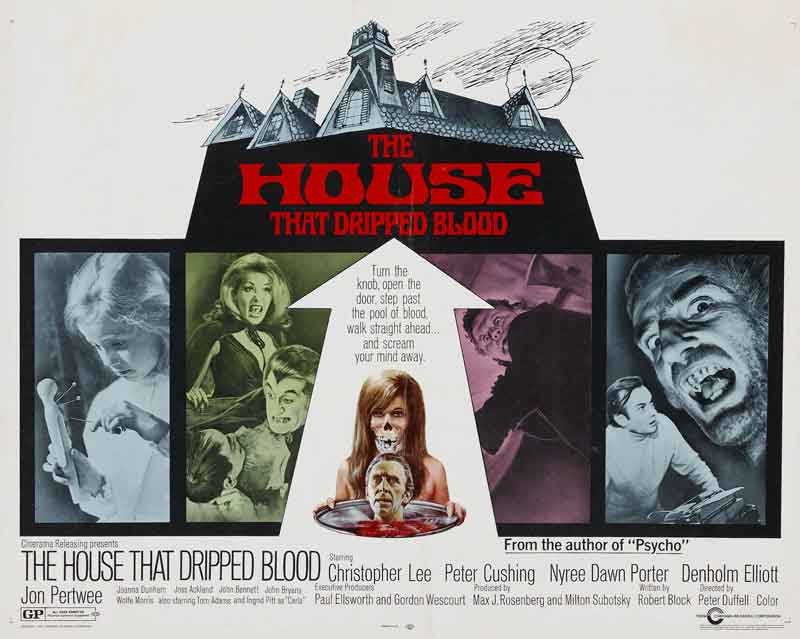
TITLE: The House That Dripped Blood
YEAR RELEASED: 1970
DIRECTOR: Peter Duffell
CAST: Peter Cushing, Christopher Lee, Denholm Elliott, Jon Pertwee, Nyree Dawn Porter, Josh Ackland, Chloe Franks, Ingrid Pitt, Geoffrey Bayldon
The House That Dripped Blood 1970 Review
The third of Amicus Productions’ portmanteau horrors, ‘The House that Dripped Blood’, gives us a host of well-known actors and some great storylines, that are not afraid of either humour or irony.
Based on ‘Psycho’ writer Robert Bloch’s short stories, the film brings together four segments which revolve around a gothic mansion, ‘Yew Tree House’ rented out by the enigmatic estate agent, A.J. Stoker (John Bryans).
Director Duffell, has always claimed that the title of the film was a bugbear created by the production company, particularly as not one drop of blood is spilt throughout the whole film!
Originally titled ‘Death and the Maiden’ the segments are linked by the actions of the female characters in each story, and the way the tenants of the house all die in a horrible fashion.
The film was made on the back of the success of ‘Dr Terror’s House of Horrors‘ (1964) and actually looks very good for an old film.
The house itself is actually the small gate house in the grounds of Shepperton Studios, which was visually expanded using extra scenery and had its gothic decoration added.
The indoor scenes were shot in the studio, the gardens and lake were also in Shepperton’s grounds, and town shots were filmed in Weybridge, Surrey.
1. Method for Murder
We begin by meeting Detective Inspector Holloway (John Bennett) who has been sent by Scotland Yard to investigate missing film stars.
The police constable explains that there is something he hasn’t mentioned about the house.
We are introduced to a young couple named Hillyer, played by Denholm Elliott (who doesn’t strike me as particularly young) and Joanna Dunham.
Charles Hillyer is a writer looking for somewhere to write his book, and he is impressed with the library in the house, the book ‘House of Death’ convincing him that the house is the perfect place to finish his book.
Elliott gets on with writing in a lovely cable knit cardi, and comes up with his character, Dominic (Tom Adams).
The atmospheric old house with its creepy macabre clichés (skull resting on the classic Dracula novel, huge candelabra, chiming clock, carved wooden statues) begins to play tricks on the author, and Hillyer starts to believe that his murderer is coming alive.
Denholm Elliott plays his role wonderfully, with believable tension and a nervy quality that draws you into the story, and the filming is well thought out to maximise the terror felt by Hillyer.
The segment ends with a twist, which comes as a real surprise on first viewing.
2. Waxworks
Peter Cushing plays the part of a retired stockbroker, Philip Grayson, renting the house to escape an unrequited love affair.
Duffell purposefully bases the story in a different room, with different colour scheme, to avoid the monotony of just using one set in the house.
Grayson, we find, is a solitary character still affected by the loss of a beautiful woman, and on visiting the local town (really Weybridge in Surrey) comes across Jacquelin’s Museum of Horror, a wax museum filled with very badly made wax figures.
The figures really are very poor and quite a let down for a film with quality scripts and actors, and the model of Salome is quite laughable.
Only Cushing’s nightmare sequence, which wasn’t planned in the original script, seems to hold together the creepy atmosphere from the first story.
Grayson’s old friend Neville Rogers (Joss Ackland) drops by and we find that they both held a candle for the mysterious woman in the photograph.
On an outing in town they come across the wax museum again and Neville insists they go inside.
He becomes obsessed with the ‘beautiful’ wax head behind the purple curtain and that, for him, is the beginning of the end.
Cushing did his own stunts during the filming and his angst at the loss of his love was probably heightened at the time by the terminal illness of his beloved wife, Helen.
He had actually tried to get out of the filming due to the trauma of his wife’s illness, but found he had to honour his Amicus contract.
Cushing is particularly dapper in this role and the fashion at the time is not lost on our modern eye.
3. Sweets to the Sweet
Here we see quite an unusual casting for Christopher Lee, that of victim rather than the evil tyrant we initially think he is.
Again Duffell moves around the house, taking us upstairs to Jane Reid’s (Chloe Frank’s) playroom.
Looking for a tutor and carer for his daughter, John Reid (Lee) appoints a widow, Mrs Norton (Nyree Dawn Porter), who immediately begins to build a friendship with the child.
Chloe Frank is the perfect contrast to Lee’s overbearing character; a child who looks like an innocent angel compared to the stiff uptight father who dominates his daughter’s every move.
Jane’s fear of fire leads us to believe that something awful has happened to the child, but we soon find that all is not as it seems.
In fact, Frank was quite the little horror actress, appearing in quite a few British horrors around this time, such as Tales from the Crypt (1972), Trog (1970) and Who Slew Aunty Roo (1971).
She was actually a sweet seven year old that had the ability to look perfectly evil when she put her mind to it!
It seems Jane is following in her mother’s footsteps and her love of reading encyclopaedias causes her father to die in excruciating pain.
4. The Cloak
Vincent Price was originally offered the leading role of Paul Henderson for this segment, but unfortunately he was under contract with American International at the time and although he wanted to do it was replaced by the then Dr Who, Jon Pertwee.
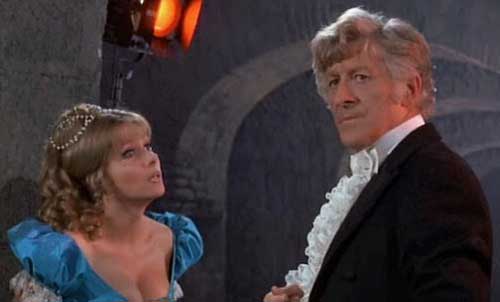
Pertwee plays a ham actor and horror expert, who less than enamoured by his film’s wardrobe, sets off to buy his own costume. T
he whole segment laughs at the horror genre, and the humorous script is laced with pertinent one-liners, he even pokes fun at Christopher Lee’s own portrayal of Dracula calling him ‘the new fella’.
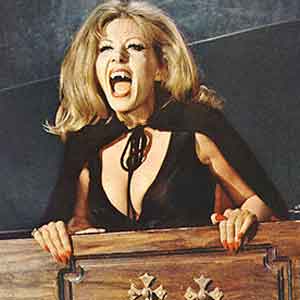
Pertwee finds a suitable costume shop (actually part of the set for ‘Oliver’ at Shepperton) and meets Theo von Hartmann played by Catweazle himself, Geoffrey Bayldon. The jokes fly thick and fast, and Henderson buys just the cloak he needs, without knowing its hidden powers.
Pertwee and Ingrid Pitt ham it up as two horror characters and Henderson unwittingly bites his leading lady.
On the stroke of midnight he dons his new cloak only to find that comedy fangs and the ability to fly (Pertwee’s own idea) are the order of the hour.
The segment is full of comic irony, both Pertwee and Pitt work together to carry it off beautifully, actually Pitt went on to secure her position as the queen of the vampires in later films, but I think the segment very cleverly sends up the horror of the day!
On the whole this is a great little film, totally of its time and suitably scary and well acted.
Only the Waxworks segment lets it down and ironically, considering its title – there’s not a drop of blood in sight.
Read Asylum (1972) and The House That Dripped Blood (1970) Blu-ray Review
Tell us your view about The House That Dripped Blood 1970 in the comments section below!





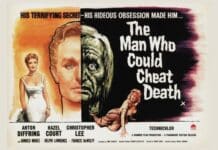
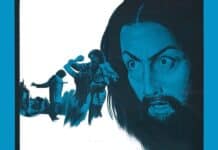
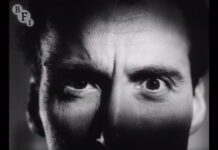
My favourite Amicus movie. A very original method of linking the various stories together and a suitably ambiguous ending. The movie’s title is very tongue-in-cheek as the viewer sees not one single drop of actual blood at any point in the proceedings.